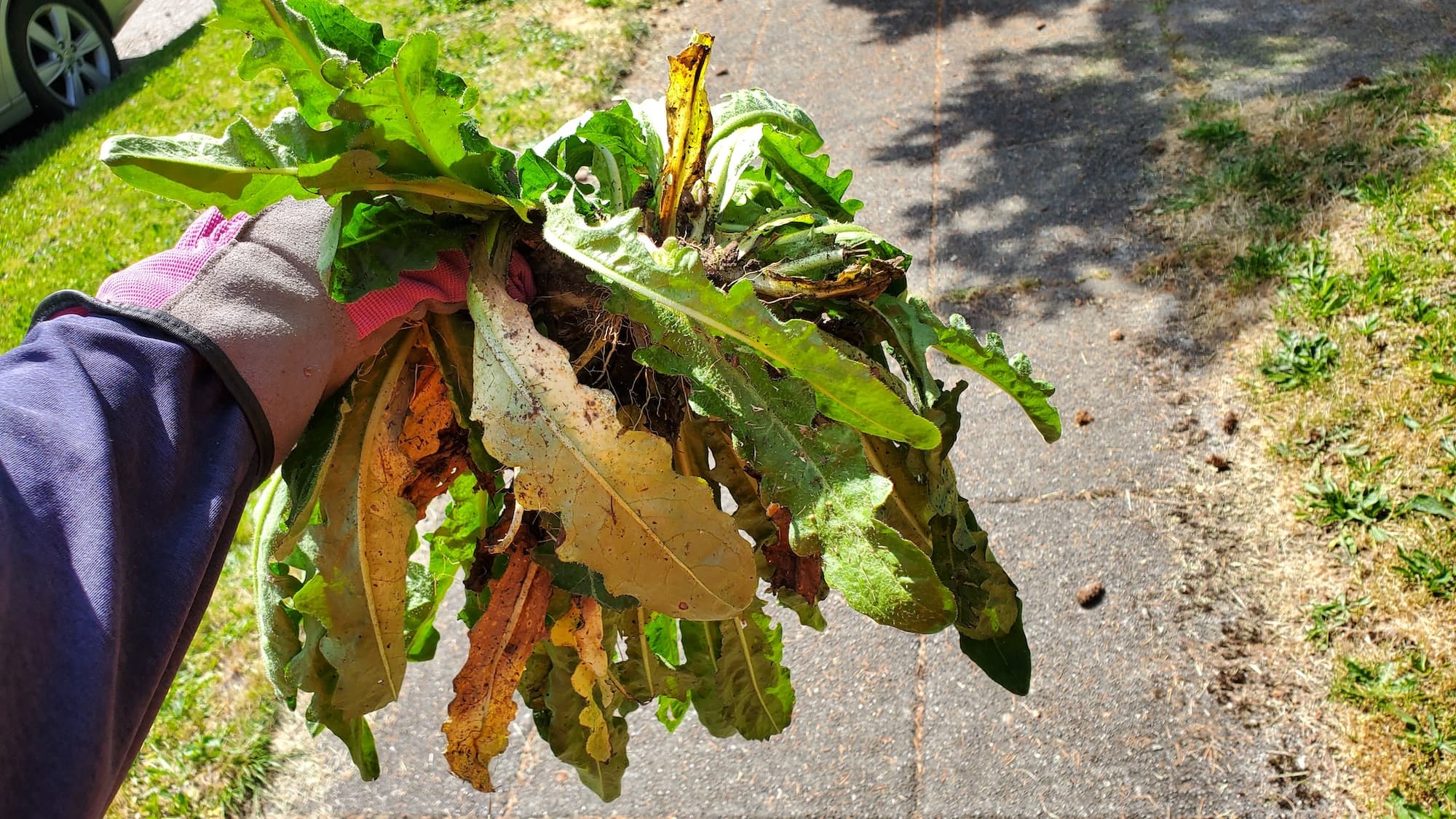Weeding Pull weeds in rose beds
Homeowner’s Issue
Weeding homeowners face a Pacific Northwest set of problems: heavy seasonal rain, compacted clay-silt soils, and shaded corners that favor moss and persistent weed varieties. Many yards here slope toward the street or down through terraces, so poor drainage and runoff bring weed seed and sediment into rose beds. Sun exposure is often patchy—morning sun, afternoon shade—so standard single-approach treatments don’t hold up long. HOA rules and curb-appeal expectations in nearby neighborhoods like West Seattle and around Roxhill Park mean rose beds need to look tidy without chemical treatments.
Common weeds in Weeding rose beds include bindweed, chickweed, grassy annuals, and self-seeding mustard; these compete with roses for moisture and nutrients, and they can hide pests. Gardeners also report mulch washout on slopes during heavy rain, leading to thin mulch cover and fast regrowth. The solution is practical, hands-on care: root-level removal, better soil structure with compost, stable mulch or fabric on slopes, and attention to bed edges to meet HOA standards. Our approach focuses on sustainable, manual weeding that improves drainage, reduces recurring work, and protects roses without herbicides.
Our Quality Service
We provide focused, sustainable weed removal for rose beds in Weeding, tailored to local soil and rainfall patterns. We hand-pull and dig out roots, improve soil where compaction limits root health, and install organic mulch to retain moisture and suppress regrowth. For sloped beds we stabilize mulch and suggest low-maintenance groundcovers to reduce future weeding.
Benefits:
- Safer for children, pets, and pollinators—no herbicides used.
- Improved curb appeal with clean edges and healthier roses.
- Reduced ongoing maintenance and better long-term drainage.
What’s Included
- Initial assessment of rose beds and surrounding drainage.
- Manual weed removal, root extraction, and targeted spot weeding.
- Pruning light growth where needed to improve air flow.
- Application of organic mulch (as selected) and clean edging.
- Haul-away of large debris or placement in your green bin.
Options / Upgrades:
- Mulch + landscape fabric on request for high-traffic borders.
- Organic compost or soil amendment to improve structure.
- Green-bin vs. haul-away disposal choices.
- Seasonal maintenance plans (quarterly, bi-monthly, monthly).
Before & After / Expectations
We work cleanly but honestly: expect some transient noise and green debris during service and brief patches of exposed soil until mulch settles. Driveway or sidewalk access is helpful for larger loads. On hills or steep beds we may need a helper or extra time for erosion control.
Care tips for Weeding yards:
- Keep mulch at 2–3 inches and replenish after heavy rains.
- Water deeply but infrequently to favor rose roots over weeds.
- Monitor shady areas for moss and clear leaf litter in fall.
- Remove ivy and invasive runners promptly before they spread.
FAQs
How long will a service visit take?
Small rose beds: 1–2 hours. Larger or slope-stabilized beds may take longer; we’ll estimate on-site.Do you use herbicides?
No. We use manual removal, mulches, compost, and cultural controls only.Can you meet HOA requirements?
Yes—we’ll confirm local standards and leave beds neat with clean edges.Do I need to prepare the yard?
Clear a short access path and remove fragile decorations; otherwise we handle the rest.
Call to Action
Weeding homeowners: book a free estimate for sustainable rose bed care. We schedule quickly, deliver reliable results, and know local soil and drainage challenges. Email neatandtidyseattle@gmail.com to get started—fast scheduling and sensible, lasting solutions from your neighborhood pros.
Licensed • Bonded • Insured










